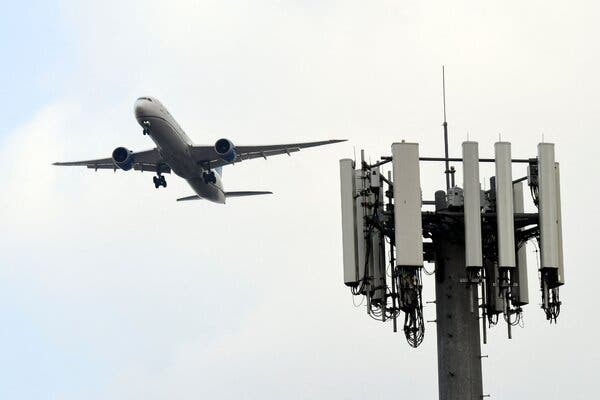The recent back and forth between the telecom industry and the Federal Aviation Administration (FAA) has created a spike in worries and debate surrounding the rollout of 5G technology. Should you put on a tinfoil hat and stick yourself in a faraday cage, are planes going to fall from the sky, or are most of the common fears blown out of proportion?

The main cause of concern has to do with a 100-year-old piece of technology, the radio altimeter, a fundamental part of modern aviation. The radio altimeter is used to determine the current height of an aircraft and is useful when landing in imperfect weather conditions. It does this with a radio transmitter and receiver, bouncing radio signals off of the terrain below and measuring the time it takes for them to return. By knowing the propagation speed of the wave, the instrument is able to accurately determine the distance between the aircraft and the ground below.
5G interferes with these radio signals, which is the reason the FAA and others in the field have raised concerns. Most altimeters operate on a band from 4.2 to 4.4 GHz, which can interfere with signals from the 5G cell towers, which range from 3.7 to 3.98 GHz. This interference can cause certain models of radio altimeters to malfunction, which can make landings more difficult for pilots. The radio altimeter is also used in many auto-pilot and auto-landing functions, which can create catastrophic errors without visual-impairing weather conditions. Some of these systems rely heavily on the readings of the plane’s altimeters, and if malfunctioning due to interference can cause issues similar to what caused the FAA to ground the 737 Max a few years ago. The FAA recently issued a warning on this to all 737’s stating, “The presence of 5G C-band interference can result in degraded deceleration performance, increased landing distance and runway excursion,” leading some experts to believe interference from 5G bands could lead to difficulties in stopping planes on the runway.
These issues have caused conflict between the FAA and major telecom companies like AT&T and Verizon, who have been ramping up construction of 5G sites in recent years. The problem came to a head recently as these companies began building closer to airports, leading the FAA to cancel flights and issue warnings to potentially affected aircraft.
From here, the FAA reached an agreement with AT&T and Verizon, delaying the activation of certain 5G sites while they worked on a solution. With the collaboration with the telecom companies, the FAA was able to determine which types of altimeters are safe to use, and also the areas of concern for aviators. The FAA has also cleared around 90% of commercial aircraft for flight and is working with companies to determine a better strategy for 5G site placement.
So while there is no need to worry about 5G interfering with your brainwaves, there still is a reason to be concerned about its rapid deployment. While it seems that the FAA and major telecom and airline companies have come to an agreement, there are still 10% of airlines with inadequate radio equipment, leaving them vulnerable to 5G interference. This ordeal leaves smaller aviation companies between a rock and a hard place: either comply and spend millions upgrading their fleet or be faced with occasional cancellations and potentially catastrophic consequences.
Be First to Comment